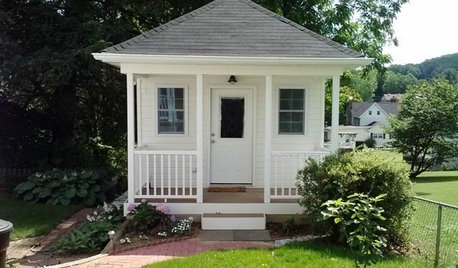Summary: I�m starting to think we�re going to need to replace all our knob & tube because of likely damage due to too much amperage running through it. But I need help understanding how the system is wired with all these two-fuse circuits I�m finding.
The long story: The 1902 house we just bought has a 60-amp fuse panel in the basement, another subpanel (which was probably originally the main panel) in the back entryway, and both knob & tube and newer wiring found throughout the house. Our original thought was to rewire everything circuit by circuit as we renovate (we are advanced DIYers with some experience in this area, but not with an old house) and to have a professional install a new 200-amp breaker box. But after talking with neighbors and reading more online, we started feeling okay about keeping the knob and tube, especially since all of the K&T outlets are on interior walls, so we don't have to worry about insulation added around it. We would just add a couple new circuits of grounded outlets on the exterior walls.
I just made a circuit map of the whole house by unscrewing one fuse at a time and checking which outlets turned off. The theory that the back-entrance panel used to be the main panel definitely makes sense, as almost all the ceiling lights in the house, as well as most of the 2nd-story outlets, as well as the garage, are all controlled by fuses on that subpanel. Since we have seen K&T on some of those circuits, we're assuming that all of those circuits are K&T (except for the garage).
The rest of the circuits (1st-floor outlets, basement outlets, large appliance circuits) come straight from the larger fuse box in the basement, and these all have newer wiring (not brand new, just not K&T).
But here�s the thing I�m worried about� the back-entrance subpanel is controlled by two fuses on the main panel, a 30A and a 12.5A fuse that are next to each other. Then, the subpanel has 6 fuses. (I was assuming and hoping that each fuse protected it�s own nice little circuit, but no.) Two of the fuses (30A and 30A) work in tandem to control the rest of the sub panel. Then, the remaining four control just two circuits� a 15A and a 30A control the main floor ceiling lights, a yard light, and a porch light, and a 30A and a 25A control everything upstairs and the garage.
First, why all the fuses that work together but aren�t matched in amperage? Just bad fuse replacement by previous homeowners?
Second, how much amperage has been running through this K&T system? I�m pretty sure the answer is "way too much." But on the circuit that is on a 15A and 30A, which is on a 30A and a 30A, which is on a 30A and a 12.5A, has it all been getting 45A? 42.5A? Or 30A? Or 12.5A? I read somewhere else that sometimes they used to fuse the neutrals. Is there a possibility that on these double-fused circuits, one of the fuses is for the hot and one for the neutral?
Let me know if I should post pictures of the panels. Thanks!












Ron Natalie
geoffrey_b
Related Professionals
Aberdeen General Contractors · Bryn Mawr-Skyway General Contractors · Saint Andrews General Contractors · West Whittier-Los Nietos General Contractors · Dover Solar Energy Systems · Little Ferry Solar Energy Systems · Lodi Solar Energy Systems · Milpitas Solar Energy Systems · Rosemount Solar Energy Systems · Teaneck Solar Energy Systems · East Hanover Solar Energy Systems · Algonquin Home Automation & Home Media · Fort Bragg Home Automation & Home Media · San Jose Home Automation & Home Media · Stamford Home Automation & Home Mediapharkus
DutchColonialOriginal Author